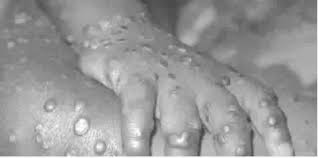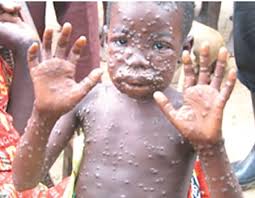
The disease which was first identified in animals in Laboratory Monkeys and first discovered in humans in 1970, in the Democratic Republic of Congo known as ‘Zaire’ back then, was discovered in a 9 year old boy in an area where smallpox has been eliminated in 1968. The disease which is known to be indigenous to Central and West Africa only has an outbreak record of 1-10% and now, it lands in Nigeria and spreading rather too fast.
Outbreak Records
According to WHO Fact Sheet, November 2016. The first outbreak was recorded in the Democratic republic of Congo between the year 1996-97 and for a long time, no outbreak was recorded until the year 2003 in the Midwest of United States. And before a two years breather on the outbreak, Unity, Sudan witnessed an outbreak in 2005 and in 2009, outreach campaign among refugees from Democratic Republic of Congo once again identified and confirmed two cases of Monkey pox. The epidemic seems to vanish into history not until it surfaced again between August and October 2016 in the Central African Republic where 26 cases was contained with two deaths recorded and the Monkey pox outbreak in Nigeria seems to be the current outbreak so far with a fast rate of infection moving from town to town. So far, the epidemic has been identified and confirmed in Rivers state, Bayelsa and Akwa Ibom.
The Sad News In All Of These
There is currently no safe or proven treatment for the Epidemic due to the discontinued research after the elimination of Smallpox. It is difficult to clinically distinguish Monkey pox from small pox but weirdly not related to Chickenpox. It has been proven that Monkey pox and Smallpox belong to the same species of genius orthopoxvirus in the family poxviridae.
The only way to be monkey pox free is to be vaccinated with the small pox vaccines, but that seem to be difficult now because the smallpox vaccines are no longer in circulation due to the discontinued research of vaccines and the elimination of Smallpox in previous years. Therefore, there is limited or no vaccines at all to help prevent the spread of the epidemic.
Severe cases has been recorded among children and the period of incubation to invasion and skin eruption can occur in severe agony and discomfort as it affects major parts of the body like Eyeballs, genitalia and the eyelids.
The family members or occupants of the same building a patient occupies are at a greater risk of being infected.
When Infection Begins
Usually, the incubation period is from 6-16 days but can range from 5-21 days also. The infection can be divided into two periods; the invasion and the eruption period. The Invasion period is between 0-5 days which is identified with fever, intense headache, swelling of the lymph node, back pain, muscle ache and lack of energy.
The skin eruption stage is within 1-3 days usually after the appearance of fever and with a 95% cases to prove that the rashes often begins on the face and 75% of cases confirming the appearance of rashes in the palm of the hands and the sole of the feet.

The rashes often evolve from lesions with flat bases to small fluid-filled blisters followed by crust happenings in approximately 10 days and it might take up to 3 weeks before the crusts disappears in a mild case.
How It Happens
Infection takes place mostly during physical contact with the blood, bodily fluids or mucosal lesions of infected animals. Although, it has not been proven if human-to-human transmission of the epidemic can sustain Monkey pox infections in the human population, but nonetheless, it can be secondarily contacted via close contact with infected respiratory tract secretions, skin lesions of an infected person or recently contaminated objects by patient fluids.
How To Curb The Monster Disease
Due to the low accessibility of the vaccine by the public, health workers should be vaccinated as well as veterinarians. Samples taken from infected animal or person should be handled by trained staff of suitable equipped laboratories.
Countries with better preparedness and member of the World Health Organisation should lend a helping hand towards affected countries, which is in accordance to the response of WHO on Monkey Pox outbreaks.
